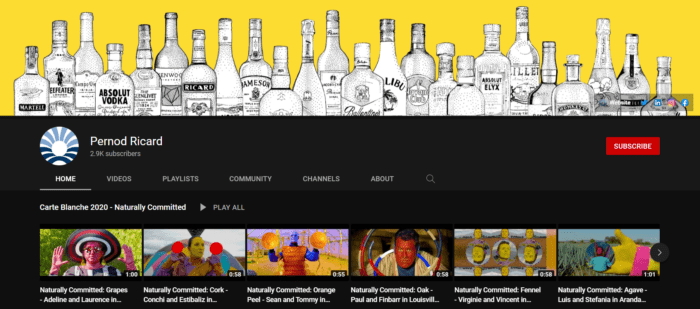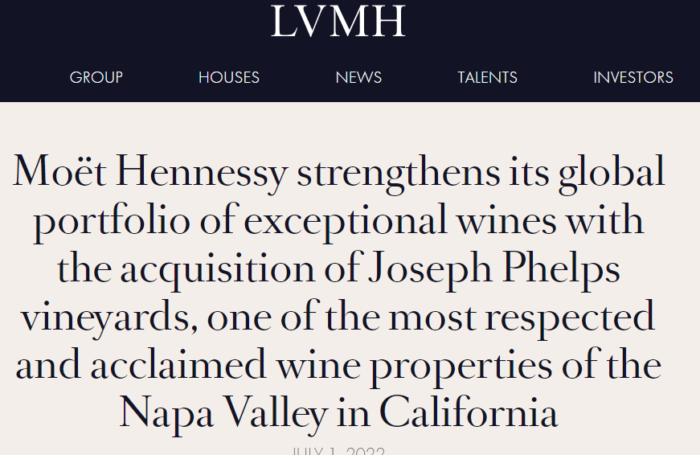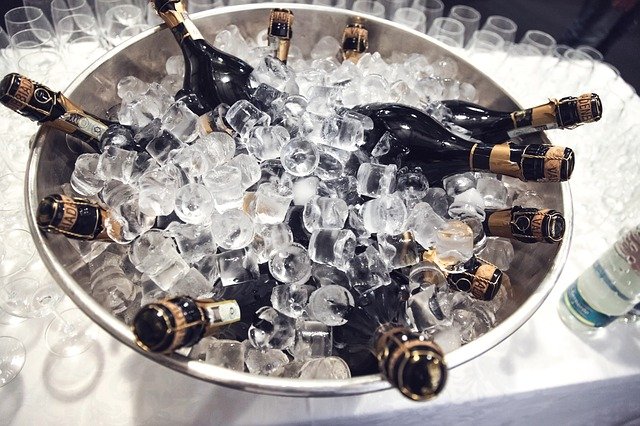There are three main types of actors in the wine industry;
- Small family-run winegrowers who own their own small vineyards and produce wine on a limited scale.
- Medium-sized winegrowers who own several vineyards and have wine production on a slightly larger scale.
- Large wine companies or « Grandes Maisons Industrielles » own multiple wine estates and produce wine on a large scale.
The wine industry is constantly evolving and marketing has had to adapt accordingly in order to keep up. With the advent of digital technology, wine marketing has had to change to keep up with the times.
The first to really adapt their wine marketing strategy was Les Grandes Maisons Industrielles. These are the wine companies that own multiple wine estates and produce wine on a large scale.
So, what’s the secret behind their success? What are the market stakes? Which channels do they use and how do they use them?
We will attempt to answer these questions in this article.
Market Overview: Les Grandes Maisons Industrielles
The wine industry is worth billions of euros. In France alone, it is worth 8.5 billion euros.
There are around 10,000 winegrowers in France and most of them are small family-run businesses. They own small vineyards and produce wine on a limited scale.
Of these 10,000, 100 companies in France can be classified as « Grandes Maisons Industrielles ». These companies control the majority of wine production in France with a whopping 60%. The top 5 wine companies alone control 30% of wine production. And they are:
- LVMH ( Louis Vuitton – Moët Hennessy)
- Pernod Ricard
- Castel
- Bollinger (Jacques Selosse)
- Scherrer ( Domaines Schlumberger)
It’s no surprise that these companies are also the ones with the biggest marketing budgets. But how do they allocate this budget?
Promotional media channels?
The Grandes Maisons Industrielles use a variety of promotional channels to reach their target audience. These channels are tailormade to reach the high-end consumers that they are targeting.
We arranged all these levers into two categories:
- Traditional marketing channels: TV, Print, Outdoor, etc.
- Digital marketing channels: SEM (Search Engine Marketing), Social Media, Content Marketing, etc.
There’s a reason why these companies use a mix of both techniques. Each promotional channel has its own strengths and weaknesses, no one channel is better than the other. It all depends on how you use it.
Traditional VS Digital Marketing?
There is a lot of debate about which type of marketing is more effective. Traditional marketing or digital marketing?
For the Grandes Maisons Industrielles, a mix of both traditional and digital marketing channels is the way to go.
For example, Pernod Ricard has a YouTube channel where they post wine-related content. Along with the usual traditional channels, they also use this channel to reach their target audience.

However, digital marketing is not the be-all and end-all. Traditional marketing channels should not be ignored either.
Take LVMH as an example. They usually sponsor high-end events such as the Cannes Film Festival or the Met Gala. This is a great way for them to reach their target audience.
But they also boost this audience through acquisitions. Most recently, they bought off the California wine giant Joseph Phelps famous for its red table wines and trophy Insignia label.

They pushed this acquisition through a press release, which was then picked up by various media outlets.
There is no one size fits all solution, each company has to find the right mix of channels that works for them.
It’s worth noting, however, that all of this advertising is done by abiding by the strict regulations set by the French government. The Grandes Maisons Industrielles have to make sure that their marketing efforts are in line with the rules and regulations, or the « Loi Evin » that we covered in our last article.
Okay, so this is the difference -or at least the main points of difference- between the two types of marketing. But what about the specific levers? The content?
Which levers do they use?
No doubt, the Grandes Maisons Industrielles have some of the best marketing teams in the business. As we said, they use a mix of traditional and digital marketing techniques to reach their target audience.
There are many types of content that the Grandes Maisons Industrielles use to promote their wines. Let’s dive in:
Display Media:
This is a catch-all term for all the banner ads that you see online. You’ll often see Les Grandes Maisons Industrielles using display media to promote their wines on websites and social media platforms.
Imagine you’re scrolling through Facebook or YouTube and you see an ad for Moet & Chandon. That’s display media. Like their partnership video with Federer.
Social Media:
All the Grandes Maisons Industrielles are very active on social media. They use it to connect with their customers and promote their wines. This is a very effective way to reach a wider, but also especially, younger audience.
One company that has always been on top of its social media game is Veuve Clicquot. They have over 1 million followers on Instagram and they’re always coming up with creative content, from testimonials to behind-the-scenes videos.

This for sure doesn’t take away from the « Luxury » factor. Quite the opposite in fact, as it just goes to show that the Grandes Maisons Industrielles are always ahead of the curve when it comes to marketing.
Retail Media:
This is a type of advertising that is usually found in supermarkets and other retail stores.
You’ll often see wine companies sponsoring shelves or placing their wines in strategic locations. This is called « shelf placement » and it’s a very effective way to increase sales.
Another popular retail media technique is « in-store sampling » or even Pop-up stores.
This is a great way to get people to try a new wine and is often very effective in terms of conversion. Take for instance, the case of Nicolas Feuillatte’s « Champagne » brand.
Check out Moët & Chandon’s pop-up store for their 150th birthday:
PR & Event marketing:
Wine companies often organize events to promote their wines. These can be anything from wine tastings to gala dinners.
Want to reach potential customers and create a buzz around a new wine? Then this is the way to do it.
It’s also worth mentioning that many of the Grandes Maisons Industrielles have their own PR teams. These teams work tirelessly to get the word out about their wines and make sure that they are always top of mind with potential customers.
Conclusion
Les Grandes Maisons Industrielles are the biggest and most successful wine producers in the world.
They use a variety of marketing techniques to reach their target audience and promote their wines.
This includes everything from social media to retail media, PR, and event marketing.
So if you’re looking to get your wine noticed, then you could learn a thing or two from the Grandes Maisons Industrielles.


